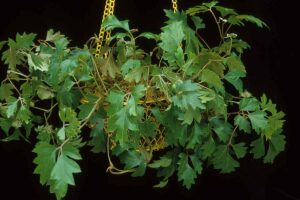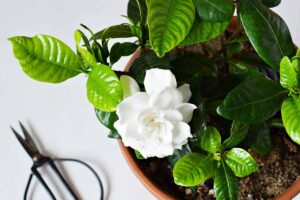Ficus benjamina, commonly known as weeping fig, is very forgiving when it comes to certain aspects of its care.
Stick it in a corner of your home with a decent amount of light, water it once a week, and for the most part, it will thrive.
However, this Ficus is deeply sensitive about changes in its environment. Woe betide the houseplant parent who wants to move this tree!

We link to vendors to help you find relevant products. If you buy from one of our links, we may earn a commission.
Any shift in this houseplant’s habitat or routine can cause a drastic loss of leaves. More or less sun, a change in your watering regime, or temperature fluctuations can all cause sudden leaf drop.
If taken care of properly, however, this relatively fast-growing small tree can be truly impressive. Our guide to growing weeping figs covers all the details.
Occasional pruning can encourage new, vibrant growth and help keep your ficus pest and disease free. Read on to find out how to start.
Here’s what we’ll cover:
Tips for Pruning your Ficus Tree
Why Prune Your Ficus Tree?
There are many reasons to prune your weeping fig. Pruning can encourage new growth, and remove old, weakened, or dead branches. It can also help to limit the spread of disease or a pest infestation.
Trimming can also increase sunlight and air circulation, two important factors for maintaining healthy plants. Sometimes a little trim is a cosmetic affair and just helps your plants look their best.
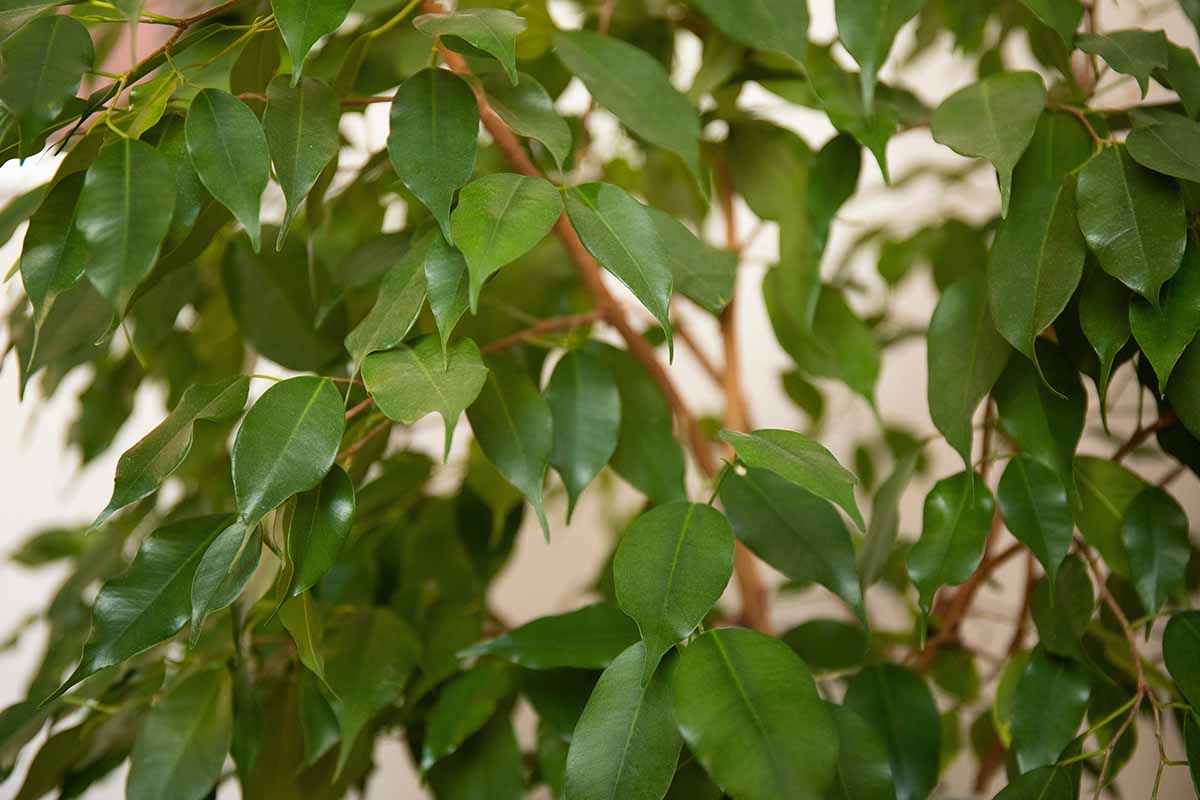
When it comes to weeping figs grown indoors, it’s best to keep your pruning to a minimum and not cut away too much living material at once.
Most importantly, pruning these plants should focus on removing dead or dying branches so they don’t clog up the interior of the tree.
Cutting out any criss-crossing branches so that the tree grows outwards, and not into a dense tangled mess, is important, too.
Like any other houseplant, F. benjamina is susceptible to infestation from aphids, mealybugs, and scale.
Sticky leaves, brown spots and yellowing foliage are all signs that these pests are present.
If you look closely you’ll likely see them hanging around the soft, tender new growth or on the undersides of the leaves, near veins.
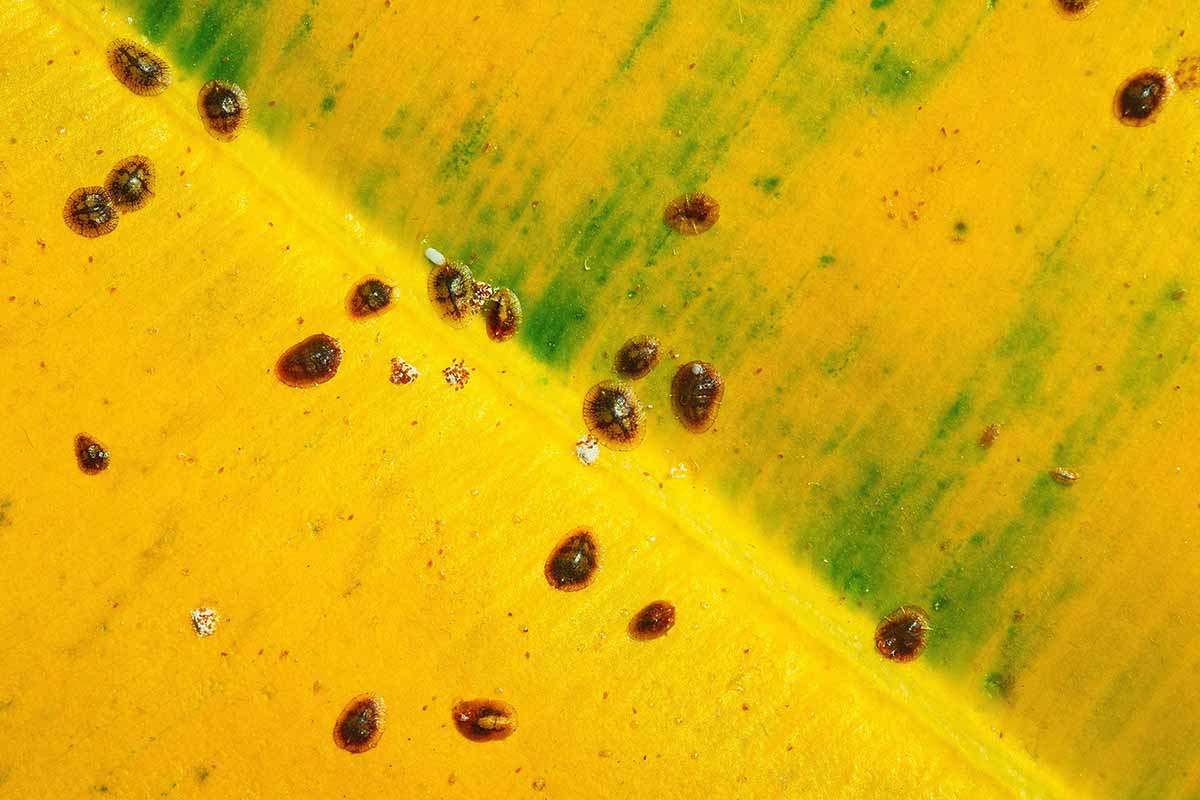
If your tree is plagued by a large number of pests, before you consider pruning, you need to take care of the infestation. Pruning should be considered a last resort to remove heavily infested branches and foliage.
Perhaps your tree is advanced in years and needs a bit of a makeover? A little trim can help with that too.
Removing old branches can help encourage new growth which can be shaped into a more aesthetically pleasing form. Although you’ll never achieve animal shaped topiaries with a weeping fig, spheres and neat balls are all within reach.
Finally, if you’re faced with a weeping fig which won’t stop losing foliage or is experiencing severe branch dieback, you could try giving it a hard prune. With a hard prune, all branches are cut back by roughly a third.
It’s typically not recommended for sensitive houseplants like F. benjamina, but for sad cases, it can be useful to try and stimulate new growth and bring it back from the brink.
When to Prune
Timing your trimming correctly is of the utmost importance, especially when it comes to weeping figs. In fact, it can be a matter of life or death! An ill-timed, overzealous chop might be all your plant needs to send it to its final resting place on the compost heap.
Dead or diseased leaves and branches can be removed at any time of year. Plan to cut off crowded branches, or to make small, aesthetic changes during the growing season, ideally in early spring.
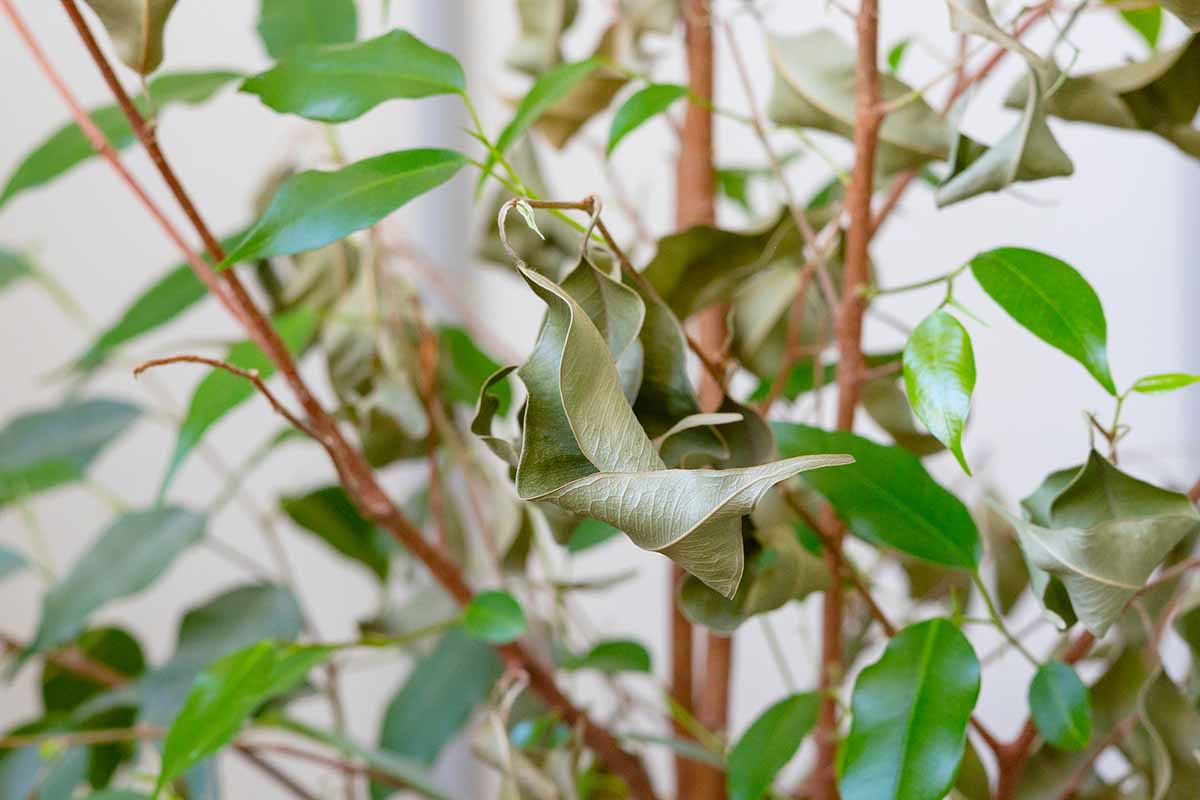
Any cuts you make will have the opportunity to heal better and more quickly while the tree is actively growing, and it will compensate for lost leaves by growing new ones rapidly.
If you need to give your tree the buzz cut of the pruning world, what’s known as a “hard prune,” this is best done during dormancy.
As mentioned, this is not recommended for weeping figs grown indoors and should be avoided unless it’s time to fall back on a last ditch effort at rejuvenating your plant.
How to Prune
Pruning isn’t rocket science, but there are a few golden rules.
Firstly, always make sure your tools are sharp. Ragged cuts are hard for the plant to heal. Secondly, clean your tools. Just a little wipe with rubbing alcohol helps prevent you from passing disease from one plant to another.
And always cut at a 45 degree angle so water will not collect on the wound and invite fungi and other disease-causing pathogens.
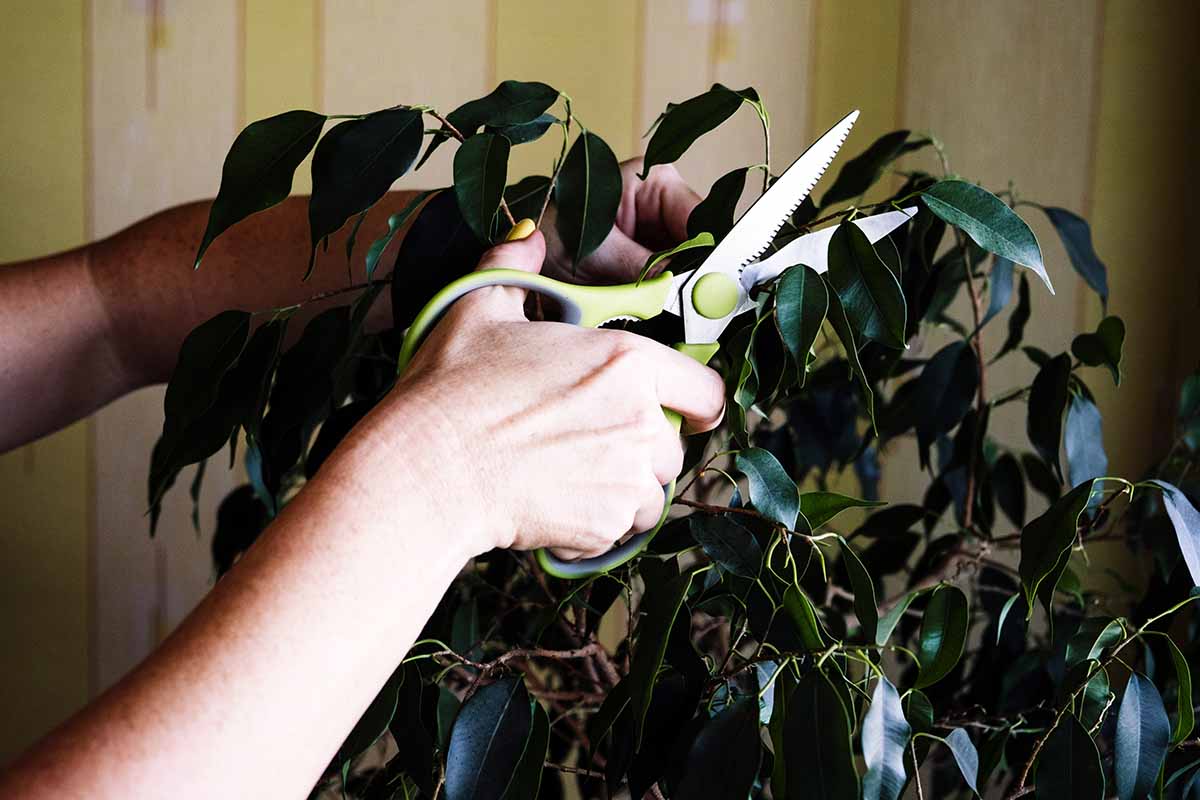
Before you begin, don some washable gardening gloves. Weeping figs belong to a family of plants known for their milky latex sap, which can be irritating to some with sensitive skin. Better to be safe than sorry.
Once you’re ready to make a cut, look for the branch’s nodes. Nodes are the two little lumps from which leaves sprout. You want to cut right above one of these nodes or just above a pair of leaves.
If you want to remove an entire branch, take it down close to the trunk, without wounding the trunk itself, and ensure you make the cut at an angle.
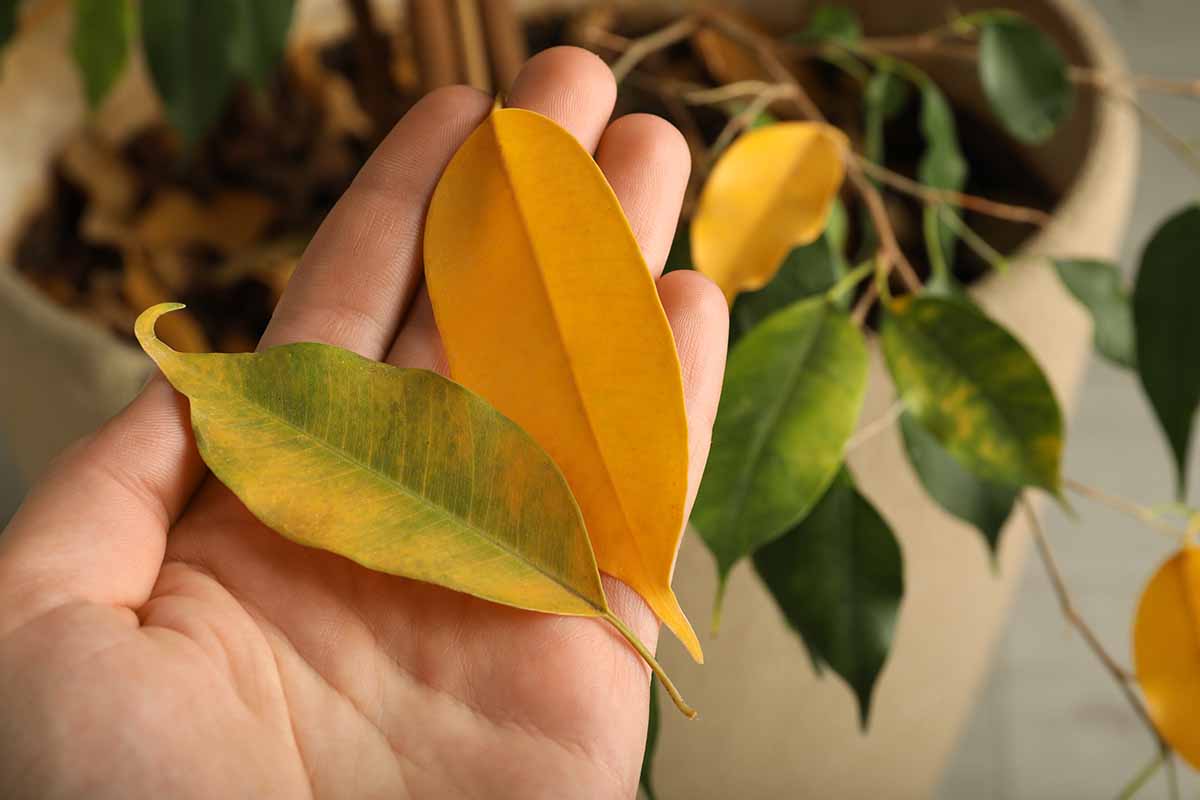
To prune discolored or dead leaves, just snip them off at the base.
Remember to cut off as little as possible. Leaves are what create your plant’s food and you don’t want it to starve to death.
Shaping Your Weeping Fig
In the wild, F. benajmina grows to heights of 50 feet or more. It’s a pretty statuesque and unruly creature!
Growth comes naturally to this wannabe gargantuan, and sometimes it’s necessary to take it down a notch, particularly if you’re growing this tree outside.

The easiest way to shape a tree is to first make sure all the dead wood and crossing branches are gone. After that, focus on the softer, newer growth towards the ends of branches.
Trimming these to create a more symmetrical, even shape will mean you may take a little more off here, and a little less there, and that’s okay. Just make sure to always cut at an angle, just above a leaf node or pair of leaves.
As a rule of thumb, never remove more than 10 percent of the branches at time.
For more information on pruning your outdoor-grown F. benjamina, take a look at our growing guide. Outdoor plants are much more vigorous and can handle a lot of heavy duty pruning, whereas potted plants indoors cannot.
Now’s the Time to Get in Shape
Tree trimming is perhaps most easily learned by going slowly, watching, and waiting. Take a few test snips, and see what the result is.
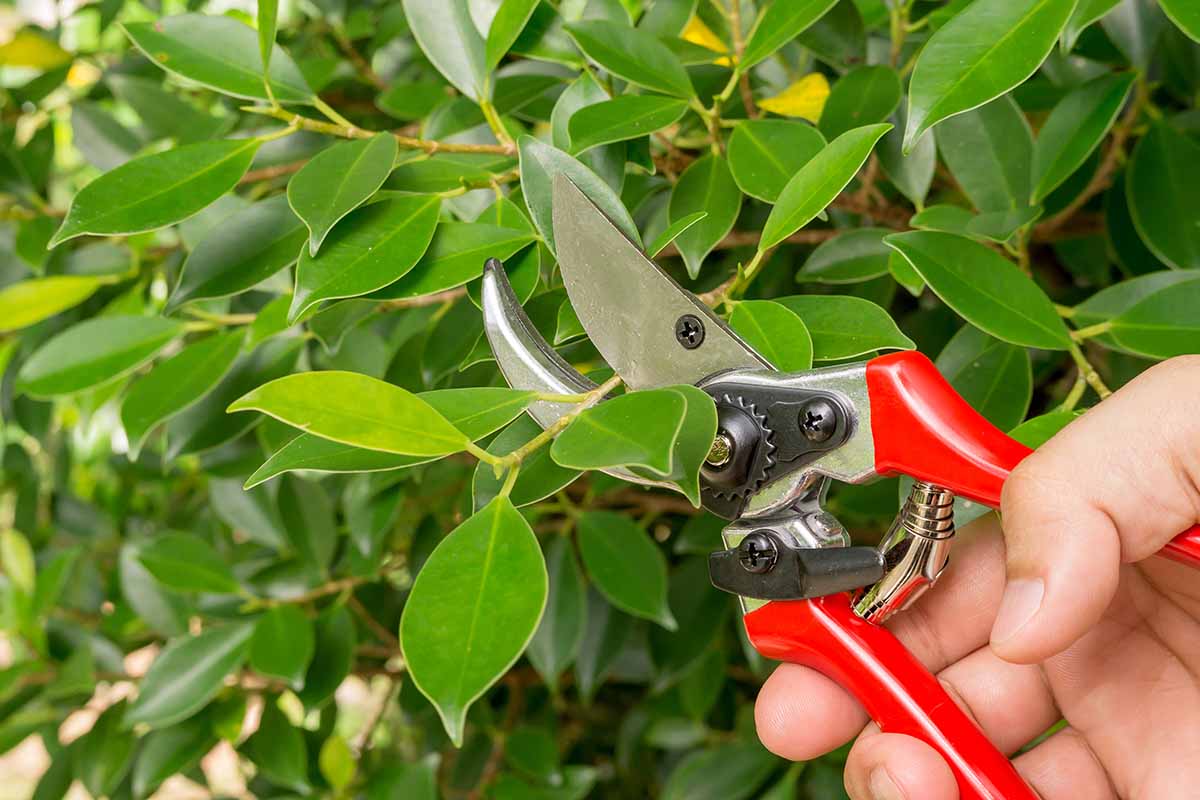
Over time you’ll learn how to shape your weeping fig into the frame you desire. Just remember to keep your equipment clean so you don’t end up with diseased wood you have to prune out, too!
Let us know how, when, and why you prune your own weeping fig in the comments below. As always, if you have any questions, ask away! We’re happy to help.
And for more information about caring for plants in the Ficus genus, check out these guides next:

